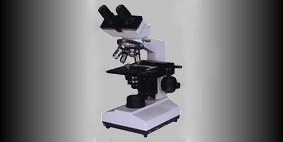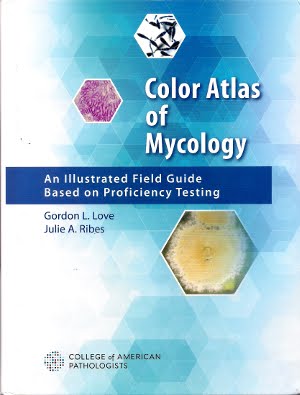Vancomycin Dependant
Enterococcus (VDE)
Explanation
of Enterococcus faecium’s curious
response to the antibiotic Vancomycin
So you try to determine the Minimum Inhibitory
Concentration (MIC) of Vancomycin against an Enterococcus isolate by E-test (epsilometer test) methodology and after
appropriate incubation you obtain this curious result:
Enterococcus faecium's response to a Vancomycin E-test
(Mueller-Hinton Agar - 24+hours, 37˚C)
What the *$%#&!;.....??
The greatest growth is where the antibiotic concentration is the
greatest and tapers off where the antibiotic concentration is the lowest. It is kind of like shooting at a flock of
ducks flying overhead, and only the ones that don’t get hit drop!!!
So what is
happening here? Let’s back up a bit and
get some history:
Vancomycin is an important antibiotic as it is the last
‘common’ antibiotic active against most gram positive organisms. Once an organism acquires resistance to
vancomycin, the antimicrobial arsenal is greatly limited in what can be used to
fight an infection.
Vancomycin resistance is plasmid mediated, meaning that
vancomycin sensitive enterococci and acquire resistance from other organisms
already vancomycin resistant. In turn,
these Vancomycin Resistant Enterococci (VRE) can pass the plasmid on to other
organisms. This may result in an outbreak
of resistant organisms which are challenging to treat and may be particularly
devastating in severely debilitated patients.
There are eight known vancomycin resistance genotypes in
enterococci with those known as Van-A being most prevalent, followed by
Van-B. Van-C offers low level intrinsic
resistance to E.gallinarum & E.casseliflavus. The remaining genotypes have not proven to be
significant in the clinical setting.
Enterococci expressing the Van-A genotype are resistant
to both vancomycin & teicoplanin.
Expression of the Van-B genotype conveys resistance to vancomycin but
the enterococcus remains susceptible to teicoplanin. Van-A resistance is generally higher (16 –
516 µg/ml) than that provided by Van-B (4 – 64 µg/ml).
In order to prevent nosocomial (hospital acquired) infections,
many facilities require a rectal swab be taken from newly admitted patients in
order to screen for VRE.
Various methods & media can be employed for this
screening. Our facility utilizes Oxoid®
Brilliance Chromogenic VRE media. On this
media, E.faecalis appears as light
blue colonies while E.faecium appears
purple. Other organisms are repressed or
appear uncoloured.
Enterococcus
faecium on Oxoid ® Brilliance Chromogenic Media (24hrs at 37˚C)
Suspicious colonies are investigated further by determining
the actual MIC of vancomycin using the E-test as mentioned above. Enterococci with MIC’s greater than 8 µg/ml
are considered to be VRE.
(Identifications can be confirmed using common microbial identification
platforms or traditional tests).
Patients known to harbour VRE’s can be isolated and
contact precautions implemented to reduce the likelihood of dissemination.
The antibiotic sensitivity plate above shows three different
organisms subjected to an e-test in order to determine their susceptibility to
vancomycin. Organism (1) is an
enterococcus susceptible to vancomycin (VSE), (2) shows an enterococcus
resistant to vancomycin (VRE), and (3) shows a curious response to vancomycin I
had never before encountered. This
organism exhibits vancomycin dependence! (VDE).
Note: the
E-test is a strip impregnated with a continuously varying concentration of
antibiotic along its length. On the
Vancomycin E-test strip the concentration varies from 0.016 µg/ml to 256
µg/ml. The MIC value is where the
growth/no-growth intersects the strip.
The zone of inhibition is narrowest as it approaches the point of
intersection and widest at the top of the strip where the concentration is the
greatest.
Okay, what
gives? First, let's explore Vancomycin Resistance a bit further:
Vancomycin binds to the terminal D-Ala:D-Ala structure in
the peptidoglycan layer of the enterococcal cell wall. This prevents the
crosslinks from forming and the pentapeptide structures from extending during
synthesis. Cell wall formation is terminated, or rather the cell wall is weakened without the cross-links and therefore the integrity is compromised and the bacterial cell is subject to variations in osmotic pressure. Eventually the cell will burst if not strengthened with the cross-links. Think of each peptidoglycan molecule as a brick and the pentapeptide bridge as the mortar holding the bricks together. (see diagram below)
In both Van-A & Van-B genotypes, the gene cluster
acts to a) detect the presence of vancomycin and start transcription of
specific resistance genes, b) form and incorporate D-Ala:D-Lac into the
growing peptidoglycan wall, and c) eliminate any D-Ala:D-Ala precursors,
thereby eliminating the vancomycin sensitive pathway of peptidoglycan
formation.
In other words, vancomycin binds to D-Ala:D-Ala, however
by the enterococcus substituting D-Ala:D-Lac into the structure, vancomycin
will no longer "functionally" bind rendering the organism vancomycin resistant.
.jpg)
Exactly why does the substitution of D-Ala:D-Lac make the enterococcus resistant to vancomycin? My university biochemistry was rusty and I wondered if the Lactate molecule in D-Lac was larger or more complex than the Alanine molecule in D-Ala and the vancomycin was sterically inhibited or prevented from binding by shear size. Did this substituted molecule block the vancomycin? In the sentence previous to the above diagram, I said that the vancomycin does not "functionally" bind to the D-Ala:D-Lac side chain of the peptidoglycan cell wall component. Looking at the structure of D-Ala:D-Alanine compared to D-Ala:D-Lactate you can see in the diagram below that they are almost identicle. The difference lies in the substitution of an oxygen molecule in the D-Ala:D-Lac for the amine group (NH) in D-Ala:D-Ala.
Vancomycin is the large molecule at the top third of this graphic. By substituting D-Ala:D-Lac for D-Ala:D-Ala, the amine
(NH) is replaced by and oxygen
(O) and the hydrogen bond
shown in red reduces the total number of hydrogen bonds from 5 to 4.
In more detail:
Now, vancomycin binds to the D-Ala:D-Ala in the peptidoglycan side chain via
5 hydrogen bonds (kind of an electrostatic bonding which can only occur between Hydrogen and Nitrogen, Oxygen or Fluorine) However, with the substitution of D-Ala:D-Lac into the side chain, and the removal of the amine group, there is one less hydrogen bond capable of forming. You say "big deal"? Well, actually it is a big deal as this loss of one hydrogen bond weakens the bond between the vancomycin molecule and the enterococcal peptidoglycan side chain by three fold, or 1000X. While the vancomycin molecule still attaches to some degree, it is not in a configuration that can effectively block or prevent the Trans-glycosylase enzyme from forming the pentapeptide cross-link between the neigbouring peptidoglycan wall components
Vancomycin Dependence (VDE):
It has been proposed that vancomycin dependence may
develop from the loss of a functional D-Ala:D-Ala ligase in the VRE strain,
which is then unable to survive unless vancomycin induces the production of
D-Ala: D-Lac ligase. This dependence involves mutations to the dll gene
which encodes the enterococcal D-Ala:D-Ala ligase protein.
In other words, Vancomycin induction of the Van A or Van
B ligase would compensate for the absence of the native ligase by producing
D-Ala:D-Lac allowing for cell wall precursor synthesis. Since these ligases are
only induced in the presence of vancomycin, the organisms cannot grow in the
absence of this antibiotic unless it reverts to the vancomycin resistant form.
Revertant Mutant Enterococci:
If a particular strain of enterococcus becomes dependent
on vancomycin for its growth and survival, it would seem logical that removing
vancomycin would cause the organism to die. Surprisingly, this is not always
the case as the organism may undergo a ‘revertant’ mutation. The enterococcus
may undergo another genetic change that restores the D-Ala:D-Ala ligase
function. The organism may enter a cyclical mutational change allowing it to
shift between resistant and dependant phenotypes.
Withdrawal of vancomycin may not be adequate to eliminate
vancomycin dependent strains.
On the first photograph of this post, the colonies
randomly scattered throughout the agar surface, away from the E-test strip may
be revertant colonies. These colonies were not apparent after 24 hours however these colonies appeared after sitting on the bench for approximately another 16 hours.
Revertant strains have not been observed in clinical
situations and the presence of VDE does not appear to affect the patient’s
clinical outcome.
These are the kind of microbiological oddities that give
this blog its title “Fun With Microbiology”!
References:
1. Bacterial resistance to vancomycin: five genes and
one missing hydrogen bond tell the story.
C.T. Walsh et al: Chemistry & Biology: January
1996, 3:21-28
2. Vancomycin resistance in enterococci: reprogramming
of the d-Ala–d-Ala ligases in bacterial peptidoglycan biosynthesis.
V.L. Healy et al: Chemistry & Biology:
Volume 7,
Issue 5, 1 May 2000, Pages R109–R119
3. Vancomycin-Resistant Enterococci: Mechanisms and
Clinical Observations.
H.S.Gold; Clinical Infectious Diseases (CID) 33: 210-218, July 2001
4. Crystal Structure of Vancomycin
Martina Schäfer, Thomas R Schneider & George M
Sheldrick.
Structure: 15 December, 1996, 4: 1509-1515
5. The cytoplasmic peptidoglycan precursor of
vancomycin-resistant Enterococcus faecalis terminates in lactate.
S. Handwerger et al: J Bacteriol. Sep 1992; 174(18):
5982–5984.
10. Vancomycin analogues active against vanA-resistant
strains inhibit bacterial transglycosylase without binding substrate.
L.Chen et al: Proc Natl Acad Sci U S A. May 13, 2003;
100(10): 5658–5663.
.jpg)


.jpg)
%2B-4.jpg)







.jpg)























